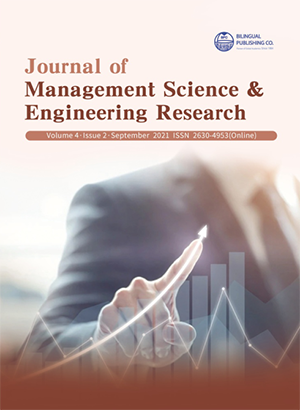-
5287
-
913
-
430
-
417
-
398
A Study on an Extensive Hierarchical Model for Demand Forecasting of Automobile Components
DOI:
https://doi.org/10.30564/jmser.v4i2.3261Abstract
Demand forecasting and big data analytics in supply chain management are gaining interest. This is attributed to the wide range of big data analytics in supply chain management, in addition to demand forecasting, and behavioral analysis. In this article, we studied the application of big data analytics forecasting in supply chain demand forecasting in the automotive parts industry to propose classifications of these applications, identify gaps, and provide ideas for future research. Algorithms will then be classified and then applied in supply chain management such as neural networks, k-nearest neighbors, time series forecasting, clustering, regression analysis, support vector regression and support vector machines. An extensive hierarchical model for short-term auto parts demand assessment was employed to avoid the shortcomings of the earlier models and to close the gap that regarded mainly a single time series. The concept of extensive relevance assessment was proposed, and subsequently methods to reflect the relevance of automotive demand factors were discussed. Using a wide range of skills, the factors and cofactors are expressed in the form of a correlation characteristic matrix to ensure the degree of influence of each factor on the demand for automotive components. Then, it is compared with the existing data and predicted the short-term historical data. The result proved the predictive error is less than 6%, which supports the validity of the prediction method. This research offers the basis for the macroeconomic regulation of the government and the production of auto parts manufacturers.Keywords:
Demand forecasting; Supply chain management; Automobile components; Algorithm; Continuous time modelReferences
[1] Naaman R, Goldfarb L. (2017), The Influence of Gain and Loss on Arithmetic Performance, 10.3389/ fpsyg.2017.02150. PMID: 29312037; PMCID: PMC5733073.
[2] Andow J. (2016) Qualitative tools and experimental philosophy, Philosophy Psychol. DOI: 10.1080/09515089.2016.1224826. Epub PMID: 28392629; PMCID: PMC5359736, 1128-1141.
[3] Zuo, X. Y, & Gao, S. (2001). Petri net-based automotive market quantity demand forecasting system analysis. 25, 53-57.
[4] Zhao, S. P. (1991). A New Method of Establishing Time Continuous Model of Dynamic System. Systems Engineering-theory & Practice, 5, 4-9.
[5] Liu, Z. (2009). Application of Grey System Theory for Port Container Throughput Forecasting. Hefei University of Technology, 2009.
[6] Feng, B. (2004). Key Factors Analysis of Chinese Automobile Brand Development. Tianjin Auto, 4, 6-9.
[7] Wang, L. L., & Ma, X. (2006). Analysis on Econometric Model of Demand of Chinese Civil Automobile. Journal of Shanxi Economic Management Institute, 14, 16-18.
[8] Cai, W. (1999). Extension theory and its application. Chinese Science Bulletin, 44, 1538-1548. http:// dx.doi.org/10.1007/BF02886090.
[9] Cai, W., Yang, C. Y., Chen, W. W., & Li, X. S. (2008). Extension set and extension data mining. Science Press.




 Cisse Sory Ibrahima
Cisse Sory Ibrahima





